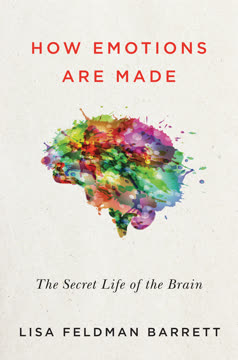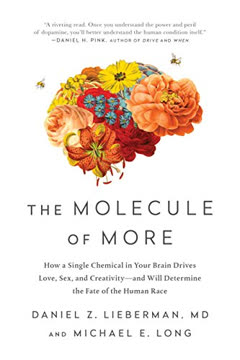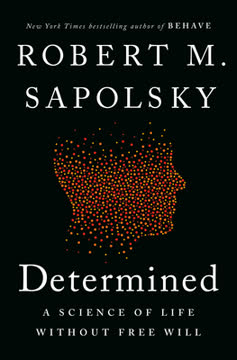نکات کلیدی
1. استرس یک واکنش فیزیولوژیکی به چالشهای جسمی و روانی است
"پاسخ استرس میتواند نه تنها در واکنش به توهینهای جسمی یا روانی، بلکه در انتظار آنها نیز بسیج شود."
پاسخ جنگ یا گریز: پاسخ استرس یک واکنش فیزیولوژیکی پیچیده است که بدن را برای مقابله با تهدیدها آماده میکند. این واکنش شامل ترشح هورمونهایی مانند کورتیزول و آدرنالین است که تغییرات مختلفی در بدن ایجاد میکنند:
- افزایش ضربان قلب و فشار خون
- هدایت مجدد جریان خون به عضلات
- افزایش هوشیاری و تمرکز
- سرکوب هضم و عملکرد ایمنی
استرسهای روانی: در زندگی مدرن، پاسخ استرس اغلب توسط عوامل روانی به جای تهدیدهای جسمی تحریک میشود. این عوامل میتوانند شامل موارد زیر باشند:
- فشارها و مهلتهای کاری
- نگرانیهای مالی
- تعارضات روابط
- اضطراب اجتماعی و سخنرانی در جمع
2. پاسخ استرس برای تهدیدهای جسمی کوتاهمدت تکامل یافته است، نه استرس روانی مزمن
"اگر شما آن گورخری هستید که برای زندگیاش میدود، یا آن شیری که برای غذایش میدود، مکانیسمهای پاسخ فیزیولوژیکی بدنتان بهطور فوقالعادهای برای مقابله با چنین اورژانسهای جسمی کوتاهمدت سازگار شدهاند."
ناهمخوانی تکاملی: سیستم پاسخ استرس ما برای مقابله با خطرات جسمی حاد، مانند شکارچیان یا بلایای طبیعی تکامل یافته است. با این حال، در جامعه مدرن، ما با موارد زیر مواجه هستیم:
- استرسهای مزمن و سطح پایین
- فشارهای روانی و اجتماعی
- فعالسازی طولانیمدت پاسخ استرس
اثرات مضر استرس مزمن: هنگامی که پاسخ استرس بهطور مداوم فعال میشود، میتواند منجر به موارد زیر شود:
- فرسایش و تخریب سیستمهای بدنی
- اختلال در الگوهای خواب
- اختلال در عملکرد شناختی
- افزایش خطر ابتلا به بیماریهای مختلف
3. استرس مزمن میتواند منجر به مشکلات و بیماریهای مختلف سلامتی شود
"اگر استرسورها برای مدت طولانی ادامه یابند، میتوانند شما را بیمار کنند."
مسائل سلامتی مرتبط با استرس: قرار گرفتن طولانیمدت در معرض هورمونهای استرس میتواند به توسعه یا تشدید مشکلات سلامتی متعددی کمک کند:
- بیماریهای قلبی عروقی (مانند فشار خون بالا، بیماری قلبی)
- اختلالات متابولیک (مانند دیابت، چاقی)
- مشکلات گوارشی (مانند زخمها، سندرم روده تحریکپذیر)
- اختلالات روانی (مانند افسردگی، اضطراب)
- تضعیف سیستم ایمنی
مکانیسمهای آسیب ناشی از استرس: استرس مزمن میتواند از طریق مسیرهای مختلف به بدن آسیب برساند:
- التهاب
- استرس اکسیداتیو
- اختلال در تعادل هورمونی
- اختلال در فرآیندهای ترمیم سلولی
4. استرس بر سیستمهای بدنی متعدد از جمله قلبی عروقی، متابولیک و ایمنی تأثیر میگذارد
"پاسخ استرس درباره آمادهسازی بدن شما برای یک انفجار مصرف انرژی در حال حاضر است؛ استرس روانی درباره انجام همه این کارها به بدن شما بدون هیچ دلیل جسمی است."
اثرات قلبی عروقی: استرس میتواند بر سلامت قلب تأثیر بگذارد با:
- افزایش فشار خون و ضربان قلب
- ترویج تصلب شرایین (سخت شدن شریانها)
- تحریک آریتمیها و حملات قلبی
عواقب متابولیک: استرس مزمن متابولیسم را از طریق موارد زیر مختل میکند:
- افزایش سطح قند خون
- افزایش ذخیره چربی، بهویژه در اطراف شکم
- مقاومت به انسولین و افزایش خطر دیابت
تغییرات سیستم ایمنی: استرس میتواند عملکرد ایمنی را تغییر دهد با:
- سرکوب پاسخ ایمنی کلی
- افزایش التهاب
- فعالسازی مجدد ویروسهای نهفته (مانند هرپس)
5. تفاوتهای فردی در شخصیت و سبکهای مقابلهای بر پاسخهای استرس تأثیر میگذارد
"ما در فیلترهای روانی که از طریق آنها استرسورهای دنیای خود را درک میکنیم، متفاوت هستیم."
عوامل شخصیتی: برخی ویژگیهای شخصیتی میتوانند بر نحوه درک و پاسخ افراد به استرس تأثیر بگذارند:
- شخصیت نوع A (رقابتی، بیصبر)
- روانرنجوری و تمایل به اضطراب
- خوشبینی در مقابل بدبینی
استراتژیهای مقابلهای: رویکردهای مختلف برای مقابله با استرس میتوانند بر اثرات آن تأثیر بگذارند:
- مقابله متمرکز بر مشکل (پرداختن مستقیم به استرسور)
- مقابله متمرکز بر احساسات (مدیریت واکنشهای احساسی)
- مقابله اجتنابی (نادیده گرفتن یا فرار از استرسور)
تابآوری: برخی افراد به دلیل موارد زیر در برابر اثرات منفی استرس مقاومتر هستند:
- شبکههای حمایتی اجتماعی قوی
- مهارتهای مؤثر مدیریت استرس
- نگرش مثبت و حس هدفمندی
6. عوامل اجتماعی مانند وضعیت اقتصادی-اجتماعی بر سطح استرس و نتایج سلامتی تأثیر میگذارند
"اگر میخواهید شانس خود را برای اجتناب از بیماریهای مرتبط با استرس افزایش دهید، مطمئن شوید که بهطور ناخواسته اجازه نمیدهید که فقیر به دنیا بیایید."
تفاوتهای اقتصادی-اجتماعی: وضعیت اقتصادی-اجتماعی پایینتر با موارد زیر مرتبط است:
- سطوح بالاتر استرس مزمن
- افزایش مواجهه با استرسورهای محیطی
- دسترسی محدود به منابع مدیریت استرس
نابرابریهای سلامتی: عوامل اجتماعی به تفاوتهای نتایج سلامتی کمک میکنند:
- نرخ بالاتر بیماریهای مرتبط با استرس در جمعیتهای محروم
- کاهش امید به زندگی در گروههای اقتصادی-اجتماعی پایینتر
- انتقال بیننسلی استرس و خطرات سلامتی
تعیینکنندههای اجتماعی سلامت: عوامل اجتماعی مختلف بر استرس و سلامت تأثیر میگذارند:
- سطح تحصیلات
- وضعیت شغلی
- محیط محله
- حمایت اجتماعی و ارتباطات جامعه
7. تکنیکهای مدیریت استرس میتوانند به کاهش اثرات منفی استرس مزمن کمک کنند
"مدیریت استرس نمیتواند فقط از راهحل سادهانگارانه 'حداکثر کنترل. حداکثر پیشبینیپذیری. حداکثر خروجی برای ناامیدی.' تشکیل شود."
استراتژیهای کاهش استرس: تکنیکهای مختلفی میتوانند به مدیریت استرس کمک کنند:
- ذهنآگاهی و مدیتیشن
- ورزش منظم
- خواب و تغذیه کافی
- مدیریت زمان و اولویتبندی
رویکردهای شناختی: تغییر الگوهای فکری میتواند استرس را کاهش دهد:
- بازسازی شناختی (به چالش کشیدن افکار منفی)
- توسعه ذهنیت رشد
- تمرین قدردانی و تفکر مثبت
تغییرات سبک زندگی: تغییر عادات روزانه میتواند مقاومت در برابر استرس را بهبود بخشد:
- محدود کردن مصرف کافئین و الکل
- شرکت در فعالیتهای تفریحی و سرگرمی
- پرورش ارتباطات اجتماعی قوی
- جستجوی کمک حرفهای در صورت نیاز (مانند درمان، مشاوره)
آخرین بهروزرسانی::
FAQ
What's Why Zebras Don't Get Ulcers about?
- Focus on Stress and Health: The book explores the relationship between stress and health, particularly how chronic stress can lead to various diseases.
- Mind-Body Connection: It highlights the intricate connections between emotions, personality, and physical health, emphasizing the importance of understanding stress for managing health.
- Scientific Insights: Sapolsky combines personal anecdotes with scientific research to make complex ideas accessible, demystifying the science behind stress and its effects on the body.
Why should I read Why Zebras Don't Get Ulcers?
- Understanding Stress: The book provides insights into how stress affects your body and mind, helping you recognize signs of stress-related illnesses.
- Practical Applications: It includes practical advice on managing stress, which can improve your overall well-being.
- Engaging Writing Style: Sapolsky's narrative style blends humor with serious scientific discussion, making it enjoyable for both casual readers and those interested in psychology and health.
What are the key takeaways of Why Zebras Don't Get Ulcers?
- Stress Can Make You Sick: Chronic stress can lead to health issues like cardiovascular disease and immune dysfunction due to prolonged activation of the stress-response system.
- Role of Hormones: Hormones like glucocorticoids and epinephrine are involved in the stress response and can negatively impact health when activated too frequently.
- Importance of Social Support: Social connections and emotional support are crucial in coping with stress and mitigating its adverse effects on health.
How does stress affect the immune system according to Why Zebras Don't Get Ulcers?
- Immunosuppression During Stress: Stress can suppress immune function, making individuals more susceptible to infections and diseases.
- Temporary Immune Activation: The immune system can be temporarily activated during the initial phase of stress, but prolonged stress leads to a decline in immune function.
- Connection to Disease: Chronic stress-induced immunosuppression can increase the risk of autoimmune diseases and infections, highlighting the need for stress management.
What is the relationship between stress and gastrointestinal disorders in Why Zebras Don't Get Ulcers?
- Impact on Digestion: Stress disrupts normal digestive processes, leading to conditions like irritable bowel syndrome (IBS).
- Functional vs. Organic Disorders: Stress can exacerbate symptoms in functional gastrointestinal disorders, which are sensitive to stress.
- Mechanisms of Stress-Induced Symptoms: Stress increases contractions in the colon, causing discomfort and pain, illustrating the interplay between psychological stress and physical health.
How does Why Zebras Don't Get Ulcers explain the concept of allostasis?
- Definition of Allostasis: Allostasis is the process by which the body achieves stability through change, adapting to stressors by altering physiological parameters.
- Stress Response Mechanism: During stress, the body mobilizes resources to meet immediate demands, which can lead to health issues if activated too frequently.
- Allostatic Load: The cumulative wear and tear on the body due to chronic stress is known as allostatic load, emphasizing the importance of stress management.
What are the best quotes from Why Zebras Don't Get Ulcers and what do they mean?
- "Stress can make you sick.": This quote highlights the direct impact of stress on physical health, emphasizing the importance of managing stress to prevent illness.
- "You cannot really understand a disease in vacuo, but rather only in the context of the person suffering from that disease.": It advocates for a holistic approach to medicine, considering individual experiences and psychological factors.
- "Science is not meant to cure us of mystery, but to reinvent and reinvigorate it.": This reflects Sapolsky's belief in the beauty of science and its role in enhancing our understanding of complex phenomena like stress.
How does Why Zebras Don't Get Ulcers address the effects of stress on reproduction?
- Disruption of Hormonal Balance: Stress can lead to hormonal imbalances that disrupt reproductive functions in both males and females.
- Impact on Sexual Behavior: Stress negatively affects sexual desire and performance, impacting intimate relationships.
- Long-Term Consequences: Chronic stress can lead to infertility or complications during pregnancy, highlighting the importance of managing stress for reproductive health.
What is the significance of prenatal stress in Why Zebras Don't Get Ulcers?
- Impact on Fetal Development: Prenatal stress can lead to long-term health issues in offspring, including increased risks of metabolic syndrome and cardiovascular disease.
- Mechanisms of Programming: Stress hormones can cross the placenta, affecting fetal development and leading to changes in hormone levels and metabolic responses.
- Importance of Maternal Care: Supportive environments can help counteract the negative impacts of stress on fetal development.
How does Why Zebras Don't Get Ulcers explain the concept of stress-induced ulcers?
- Role of Helicobacter pylori: While bacteria play a significant role in ulcer formation, stress still contributes to their development.
- Mechanisms of Ulcer Formation: Stress increases acid production and impairs healing processes, exacerbating existing conditions.
- Psychological Factors: Stress can lead to unhealthy coping mechanisms like smoking or excessive drinking, further increasing ulcer risk.
How can I manage stress according to Why Zebras Don't Get Ulcers?
- Understanding Stressors: Identifying and understanding personal stressors is crucial for developing effective coping strategies.
- Stress Management Techniques: Techniques like mindfulness, exercise, and social support can help mitigate the physiological effects of stress.
- Long-Term Lifestyle Changes: Improving diet, fostering social connections, and engaging in regular physical activity can enhance overall well-being and resilience to stress.
How does Why Zebras Don't Get Ulcers relate stress to societal factors?
- Socioeconomic Status (SES): Lower SES is associated with higher stress levels and poorer health outcomes.
- Social Inequality: Disparities in wealth can lead to increased stress and health risks.
- Community Support: Strong community ties can help buffer against the negative effects of stress, emphasizing the importance of social capital.
نقد و بررسی
کتاب چرا گورخرها زخم معده نمیگیرند به دلیل رویکرد جذاب و طنزآمیزش در توضیح علم استرس بسیار مورد تحسین قرار گرفته است. خوانندگان از توانایی ساپولسکی در سادهسازی موضوعات پیچیده قدردانی میکنند. بسیاری از خوانندگان این کتاب را روشنگر و مفید در درک واکنشهای استرس خود یافتند. در حالی که برخی خواستار توصیههای عملی بیشتری برای مدیریت استرس بودند، اکثر خوانندگان به بررسی عمیق اثرات فیزیولوژیکی استرس ارزش قائل شدند. چند خواننده به زبان قدیمی در مورد فرهنگهای غیرغربی اشاره کردند. به طور کلی، این کتاب به دلیل بررسی دقیق و سرگرمکنندهاش از زیستشناسی استرس به شدت توصیه میشود.
Similar Books



















